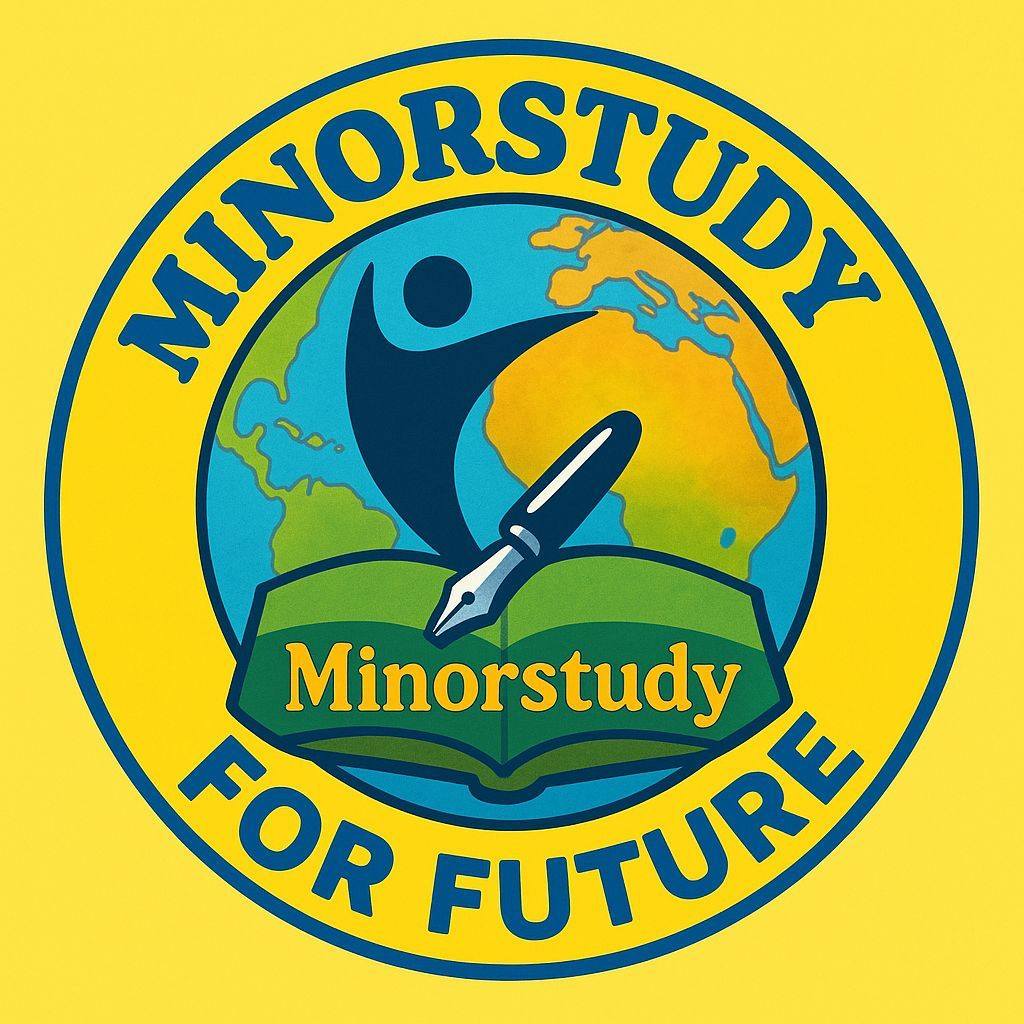🌐 World Standards Day: History, Significance, Facts & Everyday Power
In our complex, interconnected world, standards are the hidden rules that make things fit, interact, and work reliably. On World Standards Day, we pause to honor the people, processes, and purpose behind those rules. Whether it’s the USB ports on your charger, the safety of drinking water, or the dimensions of a door — many things we take for granted rely on standards.
- 1. What Is World Standards Day?
- 2. History & Timeline of World Standards Day
- 3. Why Standards Matter — 7 Powerful Facts
- 4. Significance & Purpose of World Standards Day
- 4.1 Acknowledgment & Tribute
- 4.2 Awareness & Education
- 4.3 Bridging Gaps
- 4.4 Steering Standards Toward Big Challenges
- 4.5 Encouraging Participation
- 5. How World Standards Day Is Observed
- Conferences, Seminars & Workshops
- Exhibitions & Demonstrations
- Awards & Recognition
- Public Campaigns & Education
- Theme Launches & Reports
- Multi-Day Events
- 6. Wishes & Messaging on World Standards Day
- 7. Frequently Asked Questions (FAQs)
- 8. How Standards Influence Our Daily Life
- Communication & Technology
- Health & Safety
- Transportation & Infrastructure
- Consumer Goods & Trade
- Environment & Sustainability
- Economy & Innovation
- 9. Importance to Society & Broader Impact
- Trust & Consumer Protection
- Equity & Inclusion
- Economic Growth & Trade
- Innovation Enabler
- Shared Challenges: Climate, Health & Digital
- Collaboration & Diplomacy
- 10. Important Points & Takeaways
- 11. Conclusion: Why World Standards Day Is More Important Than You Think
In this extensive guide, we will explore the history, timeline, key facts, significance, observance practices, wishing messages, societal impact, FAQs, and how standards influence everyday life. I’ll write it in a human-friendly, relatable way — because standards may feel technical, but they shape how we live, work, and dream.
1. What Is World Standards Day?
World Standards Day (WSD) — also called International Standards Day — is observed every year on 14 October. ISO+2Wikipedia+2 It commemorates the collaborative efforts of standards bodies, experts, industries, governments, and consumers in developing and implementing voluntary international standards. ISO+2Industry Self-Regulation+2
Standards are not laws, but they are norms, guidelines, specifications, and agreed-upon rules that help ensure consistency, safety, compatibility, quality, and fairness across products, services, systems, and processes. Industry Self-Regulation+2World Standards Cooperation+2
World Standards Day is a moment to raise awareness: standardization is not just for engineers or big companies — it affects all of us.
2. History & Timeline of World Standards Day
Origins & Why 14 October?
The date 14 October was chosen because on 14 October 1946, delegates from 25 countries met in London to initiate the idea of creating an international organization to foster standardization. ISO+3Wikipedia+3National Today+3
The International Organization for Standardization (ISO) was founded a year later in 1947, though the idea and initial discussions trace back to that 1946 meeting. Calendar.cx+3ISO+3Wikipedia+3
The first World Standards Day was celebrated in 1970. Wikipedia+2World Standards Day+2
Evolution Over Time
| Year | Milestone / Event | Significance |
|---|---|---|
| 1946 (Oct 14) | Delegates from 25 nations meet in London to propose international standardization | Foundation of the idea of global standards World Standards Cooperation+3Wikipedia+3ISO+3 |
| 1947 | ISO is formally established | Organizational structure for standards work begins Wikipedia+1 |
| 1970 | First celebration of World Standards Day | Institutionalizes the awareness of standards Wikipedia+2World Standards Day+2 |
| 1988 | IEC joins in the celebration | Collaboration across electrical/electronic standards becomes formal SES Standards+2World Standards Cooperation+2 |
| 1993 | ITU becomes part of the cooperation | Including telecommunications standards in the annual observance SES Standards+2World Standards Day+2 |
| 2000s–2020s | Thematic observances aligned with global priorities (e.g. sustainability, digital transformation) | Steering standards into addressing emerging challenges ISO+4World Standards Day+4Open Group Blog+4 |
Over the years, World Standards Day has become a platform to spotlight not just the technical backbone of our world, but also how standards can serve sustainability, health, innovation, and equity. IEEE Standards Association+4World Standards Cooperation+4World Standards Day+4
3. Why Standards Matter — 7 Powerful Facts
Standards Are Everywhere
We may rarely think of them, but standards touch nearly every aspect of daily life — from the size of paper (A4, ISO), to internet protocols (TCP/IP, IEEE), safety regulations for appliances, medical devices, vehicle emissions, food quality, etc. IEEE Standards Association+3Industry Self-Regulation+3World Standards Cooperation+3Voluntary but Powerful
Standards are typically voluntary consensus processes (not laws). Organizations adopt them because they add value: improved quality, interoperability, safety, trust. World Standards Cooperation+3Industry Self-Regulation+3Open Group Blog+3Standards Facilitate Global Trade
When products from different countries conform to common standards, they can cross borders more smoothly. This reduces technical barriers to trade. Industry Self-Regulation+2ISO+2Standards Are Engines of Innovation
By creating common frameworks (interfaces, protocols, modules), standards allow innovators to build more rapidly and compatibly. Open Group Blog+1Standards Support Sustainability & SDGs
Many recent standards relate to energy efficiency, climate resilience, health safety, equitable access, etc. On WSD, emphasis is often placed on how standardization contributes to the Sustainable Development Goals (SDGs). IEEE Standards Association+4World Standards Day+4World Standards Cooperation+4Thousands of Experts Volunteer
Most standards are developed by committees of experts — industry professionals, academics, regulators — who contribute their time and expertise. WSD is also a tribute to their global collaborative work. ISO+2Industry Self-Regulation+2Standards Evolve
Standards are not static — they must adapt as technologies, practices, and needs change (e.g. with AI, IoT, sustainability, health). WSD often foregrounds how standards must evolve to meet contemporary challenges. Open Group Blog+2CEN-CENELEC+2
These facts underscore that standards are not dry rules — they are dynamic infrastructure that supports safety, innovation, fairness, and global coordination.
4. Significance & Purpose of World Standards Day
World Standards Day fulfills multiple roles:
4.1 Acknowledgment & Tribute
It’s a day to recognize and celebrate the collaborative work of standards makers — a largely invisible but essential network of professionals. ISO+2SES Standards+2
4.2 Awareness & Education
Many people use standards every day without knowing it. WSD brings standards to public attention — through schools, media, industry, policy forums — so that societies appreciate this backbone of modern life. World Standards Day+3SES Standards+3Industry Self-Regulation+3
4.3 Bridging Gaps
Standards reduce fragmentation: when each region or company uses different norms, compatibility and trade suffer. WSD emphasizes harmonization, interoperability, and coherence across sectors. Open Group Blog+3World Standards Day+3Industry Self-Regulation+3
4.4 Steering Standards Toward Big Challenges
WSD is an opportunity to launch themes: for example, in 2024, the focus included trustworthy AI, health equity, and standards for sustainability. ISO+3CEN-CENELEC+3IEEE Standards Association+3
4.5 Encouraging Participation
Because many standards are developed by volunteer consensus, WSD is a call for more people — from all sectors and geographies — to get involved in standardization processes. Open Group Blog+3World Standards Cooperation+3ISO+3
In short, WSD is both celebration and call to action: celebrate what standards do, and push to make them more inclusive, effective, and responsive.
5. How World Standards Day Is Observed
The observance of WSD can take many forms around the globe, tailored to the audience — industry, government, academia, public:
Conferences, Seminars & Workshops
National standards bodies, industry associations, universities host lectures about the role of standards, future themes (AI, green tech, smart infrastructure), and how standards impact sectors. Open Group Blog+3SES Standards+3World Standards Day+3
Exhibitions & Demonstrations
Showcases of standardized products, technology demos, interactive booths to explain how standards work in everyday things (connectors, safety labels, health devices). SES Standards+1
Awards & Recognition
Many countries confer awards to individuals or organizations who have made significant contributions to standardization (in governance, innovation, outreach). In the U.S., for example, the Ronald H. Brown Standards Leadership Award is given on World Standards Day. SES Standards+1
Public Campaigns & Education
Social media campaigns (#WorldStandardsDay), educational posts, short videos, infographics — aiming to bring standards out of technical corridors into public view. Open Group Blog+4World Standards Day+4World Standards Cooperation+4
Theme Launches & Reports
Each year, a theme is announced (such as “Shared Vision, Better World”) along with reports or whitepapers showing how standards contribute to pressing issues like climate, health, digital equity. CEN-CENELEC+4ISO+4World Standards Cooperation+4
Multi-Day Events
Some observances expand into World Standards Week, with a series of events around 14 October. SES Standards+1
Because standardization spans sectors — technology, health, environment, trade — observances often involve multi-disciplinary participation.
6. Wishes & Messaging on World Standards Day
When crafting messages, the goal is to be inspirational, inclusive, and relatable. Here are sample wishes:
🛠️ Happy World Standards Day! Let’s celebrate the invisible frameworks that make our world safer, smarter, and more connected.
To the innovators, volunteers, and thinkers behind the rules that bind us — Thank You. Happy WSD!
On this World Standards Day, may we champion interoperability, quality, and fairness in all we build.
Let standards guide innovation, ethics, and human well-being — happy World Standards Day!
Wishing a bright future where standards help every voice, every region, every technology grow together.
These messages bridge the technical with the human, putting people at the heart of standardization.
7. Frequently Asked Questions (FAQs)
Q1. When is World Standards Day celebrated?
14 October every year. ISO+2Wikipedia+2
Q2. Why 14 October?
Because on that date in 1946, representatives from 25 nations met in London to discuss international standardization. World Standards Day+3Wikipedia+3National Today+3
Q3. Who organizes World Standards Day?
The observance is organized by the major global standards bodies — ISO, IEC, and ITU — through their cooperation. World Standards Day+2ISO+2
Q4. When was the first World Standards Day held?
In 1970. Wikipedia+2World Standards Day+2
Q5. What is the purpose of standards?
Standards set agreed-upon specifications, best practices, guidelines, or rules to ensure products, services, and systems are safe, compatible, high-quality, and efficient. Industry Self-Regulation+2Open Group Blog+2
Q6. Are standards mandatory?
Most are voluntary — organizations choose to adopt them. However, in some cases, governments incorporate them into laws or regulations. Industry Self-Regulation+2Open Group Blog+2
Q7. How many standards exist?
Thousands. ISO alone has tens of thousands of published international standards. National Today+2World Standards Day+2
Q8. Why do we need a day to honor standards?
Because standardization is largely invisible to the public, yet undergirds innovation, trade, fairness, safety, and development. WSD gives recognition, fosters awareness, and drives participation.
Q9. How can I participate in World Standards Day?
By spreading awareness, talking about how standards touch your life, joining local events, volunteering in standards committees (if qualified), or encouraging your organization to adopt recognized standards.
8. How Standards Influence Our Daily Life
When we zoom in from global to local, here’s how standards touch our day-to-day:
Communication & Technology
Internet protocols (TCP/IP, HTTP) enable your devices to talk to global servers seamlessly.
USB, HDMI, Bluetooth standards let devices interoperate.
Safety standards ensure electronics don’t overheat, catch fire, or damage users.
Health & Safety
Medical devices, diagnostic tests, hospital equipment are built to standardized safety and performance.
Water purity, air quality, food safety, building codes — standards set benchmarks for public health.
Transportation & Infrastructure
Vehicle safety standards, emissions limits, fuel quality, road signage all depend on standards.
Construction materials, dimensions, structural norms follow standards so buildings are safe and durable.
Consumer Goods & Trade
“Compatible” chargers, plugs, battery specs, packaging safety — standards reduce consumer confusion.
Standards help products from different countries meet a common acceptance, reducing barriers in international trade.
Environment & Sustainability
Energy efficiency standards (appliances, buildings) help reduce carbon emissions.
Standards for renewable energy (solar, wind), recycling, waste management — drive green practices.
Economy & Innovation
Standards create common reference points so innovators can build upon existing platforms rather than reinvent every interface.
Small businesses benefit when they adhere to accepted standards — their products can access wider markets.
In summary: without standards, our technological world would be much more chaotic, fragmented, risky, and inefficient.
9. Importance to Society & Broader Impact
Trust & Consumer Protection
Standards assure consumers that products meet a minimum quality, safety, and performance benchmark. That builds trust in markets.
Equity & Inclusion
Well-designed standards can ensure accessibility (for people with disabilities), fairness, and inclusion — for example, in user interfaces, design norms, or public services.
Economic Growth & Trade
By reducing technical friction, standards help economies scale, promote exports, and enable smaller players to compete globally.
Innovation Enabler
Standards reduce “reinventing the wheel” — innovators can build upon a known foundation. That accelerates development and diffusion of new technologies.
Shared Challenges: Climate, Health & Digital
Global issues require global coordination. Standards are tools in the toolkit: interoperability, data sharing, safer AI, resilient infrastructure, sustainable energy — they often rest on agreed standards.
Collaboration & Diplomacy
International standard setting involves collaboration across nations, cultures, industries — fostering dialogue, consensus, and shared problem solving.
Hence, World Standards Day is not a niche celebration — it marks a pillar of modern civilization.
10. Important Points & Takeaways
Date & Origin: 14 October — chosen to commemorate early standardization meeting in 1946. Wikipedia+2World Standards Day+2
First Celebrated: 1970. Wikipedia+1
Organizers: ISO, IEC, ITU collaborate globally. World Standards Day+2ISO+2
Voluntary Standards: Most are adopted voluntarily, yet have strong influence. Industry Self-Regulation+1
Standards Touch All Sectors: Tech, health, trade, environment, infrastructure.
Themes Matter: WSD often highlights pressing global challenges (AI safety, climate, health). CEN-CENELEC+2IEEE Standards Association+2
Awareness + Participation: WSD is as much about educating and engaging future contributors as it is about celebration.
Standards Evolve: They must adapt to changing needs (digital, sustainability, equity).
11. Conclusion: Why World Standards Day Is More Important Than You Think
If you pause and reflect, you’ll realize: standards are the hidden scaffolding of our modern world. They make complexity manageable, allow disparate systems to interconnect, and imbue predictability, safety, and fairness.
World Standards Day is more than a technical observance — it is a call to recognize, engage, and evolve that scaffolding. As technology advances (AI, IoT, green tech), challenges multiply: how to build trustworthy AI? How to ensure global access to sustainable solutions? How to integrate new domains (such as biotechnology, digital health) into standardized frameworks?
On this day, we honor the unsung architects of our systems — the standard-writers, volunteers, consensus-builders, critics, adopters. We also recommit: to make standards more inclusive (across geographies, sectors, voices), more adaptive (agile in response), and more aligned with societal goals (sustainability, equity, resilience).
In your life, take a moment: when you plug in your phone, send a message, drive, ingest water, use medical devices — standards are silently working behind the scenes. Today, let’s appreciate them — and perhaps, in our own small way, participate in shaping better ones for tomorrow.









**breathe**
breathe is a plant-powered tincture crafted to promote lung performance and enhance your breathing quality.